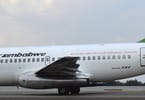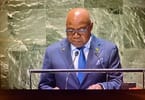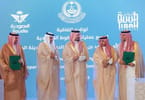(eTN) The Boma–Jonglei area of the Southern Sudan, which includes the Boma National Park and Badingilo National Park and forms one of the largest, if not the largest, savannah ecosystems across East Africa, has been targeted by the Wildlife Conservation Society for a holistic approach in protection of the area. This is in conjunction with their partners USAID and the government of Southern Sudan (GOSS).
A cross section of governmental and NGO representatives met two weeks ago in Juba to discuss the way forward in safeguarding the future of the two parks and the area in between, which is crucial to the continued existence of the large herds of white-eared kobs and other gazelles, which according to latest reports – following aerial and ground surveys – is now pegged rather above the one million mark that previously was thought to be in the region of 800,000 animals. Other species found within the area are the Tiang, the Mongalla gazelles, and reedbuck, and also includes elephant, giraffe, eland, oryx, buffalo, and the endemic but endangered antelope species Nile Lechwe.
Wildlife found also includes a number of predators, including the relatively rare hunting or painted dogs, hyenas, and lions, in addition to which many bird species, both resident and migratory, are making the two parks and connecting savannah one of the last to be discovered natural wildlife spectacles on Earth, previously only known to those in the know.
In view of growing threats to the wildlife populations through poaching and also converting the land to agricultural use, the workshop debated options for a new zoning approach, which would grant wildlife the best chances for survival and the sustainable non-consumptive use through tourism without denying the local communities the use of their land for both farming, as well as ranching, one of the major community activities in the Southern Sudan by pastoralists.
Wildlife-based tourism is thought to be one of the major upcoming economic activities for the Southern Sudan, and while many components still need to be put into place and then operationalized, the political will was clearly expressed in the workshop when the undersecretary – known elsewhere as the permanent secretary – in the Ministry of Wildlife Conservation and Tourism.
Professor Frazer Tong stated: “Wildlife conservation and protected area management can contribute directly and indirectly to improving security, creating economic opportunities, and conservation of the great natural savannah and wetland ecosystem and cultural heritage of our region. The Boma-Jonglei land-use planning process now can reconcile and balance competing needs to optimize development opportunities and ensure conservation of our tremendous wildlife and habitat areas forming the basis for wise natural resource use and development of the ecotourism sector.”
Participants from other ministries echoed these sentiments and made equally-strong statements, giving hope that the work of Wildlife Conservation Society and USAID will bear fruits in coming years, when – following the referendum for independence due in January 2011 – they hopefully have paved the way for many more tourist visitors to come and see the very last unexplored and unexploited parks and game reserves in East Africa, not yet overrun and overdeveloped and offering the “real thing” in safari experience.
WHAT TO TAKE AWAY FROM THIS ARTICLE:
- A cross section of governmental and NGO representatives met two weeks ago in Juba to discuss the way forward in safeguarding the future of the two parks and the area in between, which is crucial to the continued existence of the large herds of white-eared kobs and other gazelles, which according to latest reports – following aerial and ground surveys – is now pegged rather above the one million mark that previously was thought to be in the region of 800,000 animals.
- In view of growing threats to the wildlife populations through poaching and also converting the land to agricultural use, the workshop debated options for a new zoning approach, which would grant wildlife the best chances for survival and the sustainable non-consumptive use through tourism without denying the local communities the use of their land for both farming, as well as ranching, one of the major community activities in the Southern Sudan by pastoralists.
- Wildlife-based tourism is thought to be one of the major upcoming economic activities for the Southern Sudan, and while many components still need to be put into place and then operationalized, the political will was clearly expressed in the workshop when the undersecretary – known elsewhere as the permanent secretary – in the Ministry of Wildlife Conservation and Tourism.






















